Top Winter Holiday Destinations
The small French resort of Vaujany has leapt into the 21st century yet stays true to its ancient roots, while further down, we highlight some more alternative winter holiday ideas, by Rebecca Miles
This is a feature from Issue 15 of Charitable Traveller.
“We have enough,” says Yves Genevois, the mayor of Vaujany, a small ski resort in the southern French Alps. And with those three simple words, Mayor Genevois effortlessly sums up the character and soul of this village – it’s not greedy, it’s happy and content with its lot, and is one of a growing number of ski resorts that are recognising that a path of constant growth with endless new buildings and developments just isn’t sustainable in this delicate alpine environment.
Vaujany was originally a farming village and dates back over 1,000 years. Set in the Grandes Rousses mountains in the Isère department, it’s at an altitude of 1,250 metres. Surrounded by alpine pastures, you won’t find any high-rise purpose-built blocks of apartments here; instead, it’s all pretty wooden chalets in keeping with its traditional past.
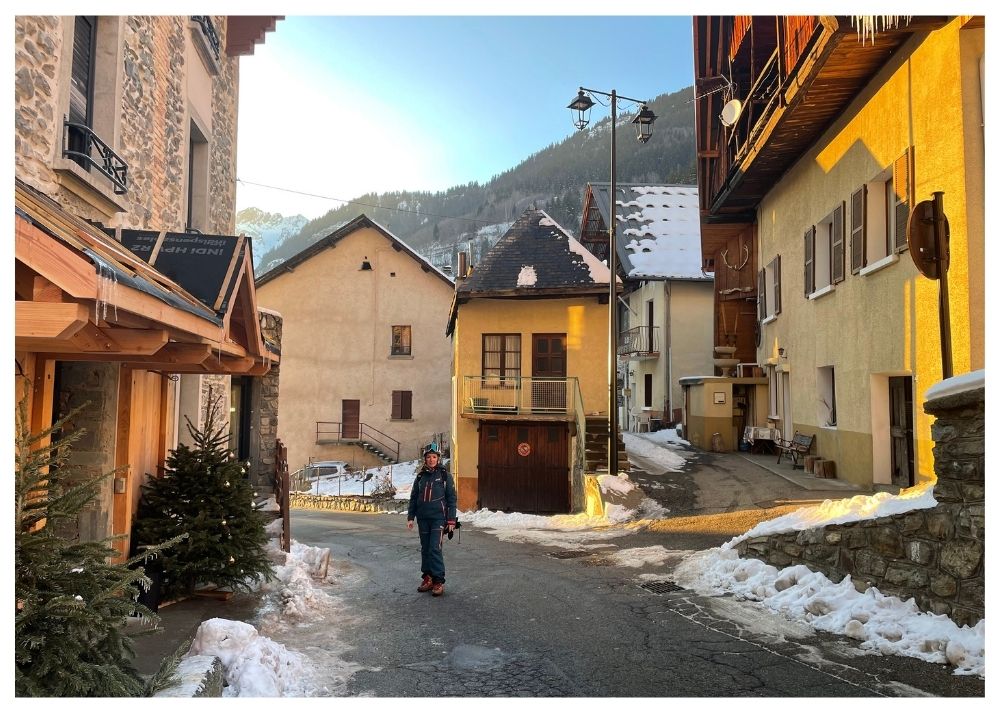
Arrive in the village and it’s not obviously clear where the ski slopes are, but cleverly designed to sit at the heart of the tiered village, with lots of lifts and escalators for easy pedestrian access, is a 160-person cable car and a smaller gondola that link the village to the much bigger Alpe d’Huez domain and its 250km of slopes. Skiing here is a tale of two contrasts. The pistes immediately above and around Vaujany are generally peaceful and largely suit early intermediates, while those in the main Alpe d’Huez domain are livelier and have options for every ability, from beginners through to experts – both have their merits and there’s a huge amount of terrain to cover, but there’s something refreshing about returning to Vaujany’s easygoing slopes.
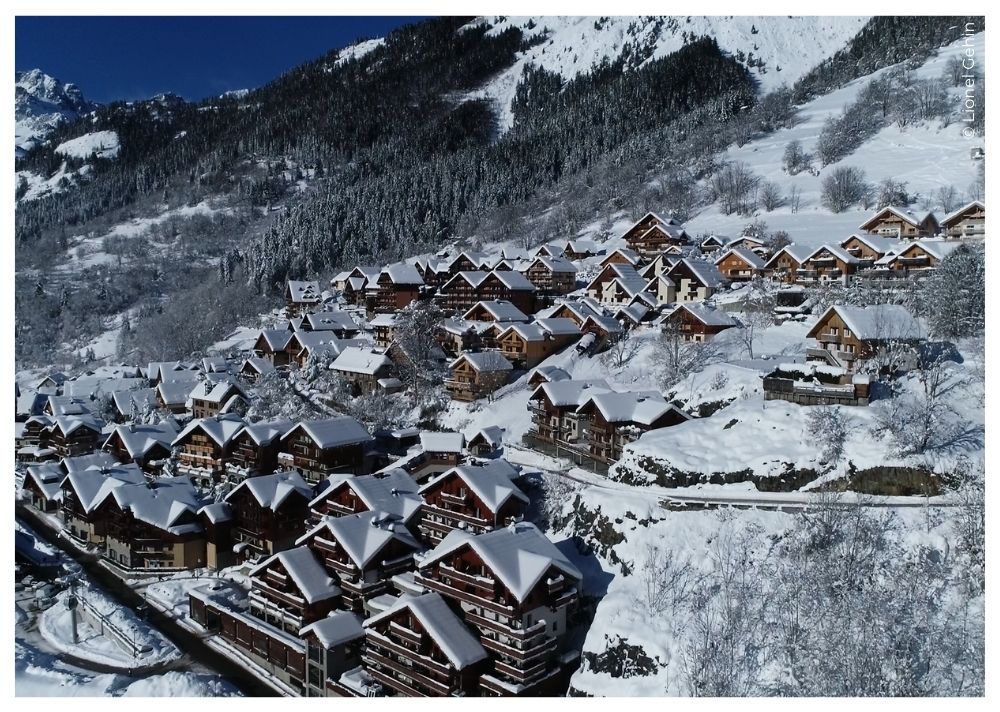
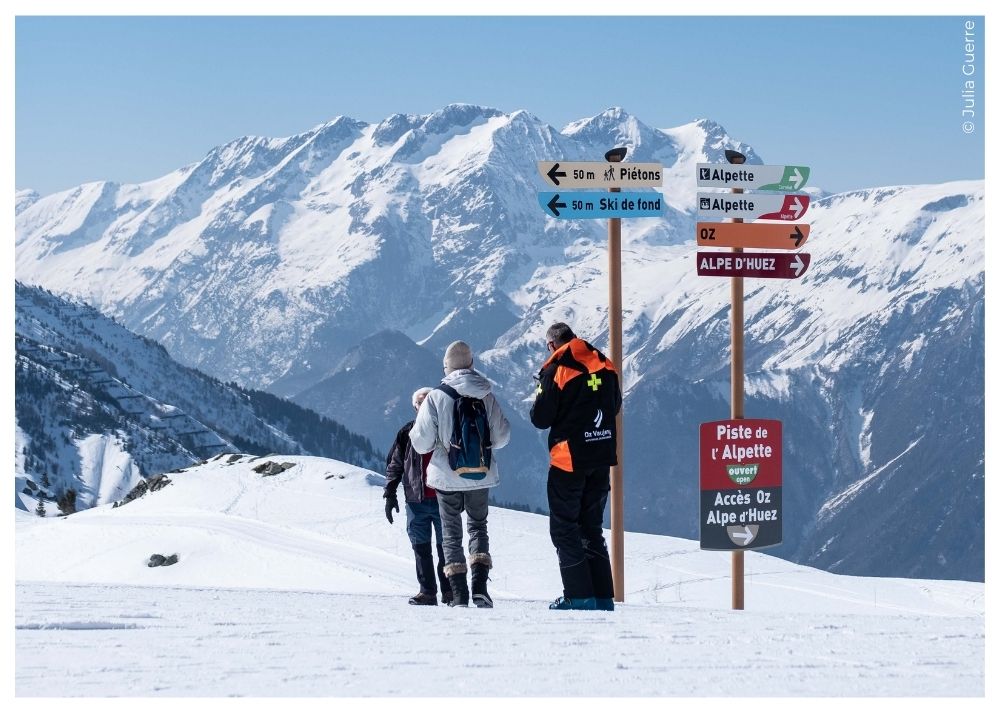
This sleepy village had its fortunes changed in 1988, when EDF, the French state-owned electricity company, built one of the country’s most powerful hydroelectric plants within its domain and gave the municipality a hefty payment (plus annual rent that gives a nice boost to the coffers). Collectively, the commune decided to spend it on building that big cable car to Alpe d’Huez and linking their future and fortunes to their famous big brother, while pledging to remain true to their rural roots.
Despite being surrounded by peaks that reach over 3,000 metres and close, as the crow files, to the burgeoning Alpe d’Huez, Vaujany is one of France’s newest ski resorts. For a long time the village was slowly in decline as its younger residents turned their back on farming life and left the mountains for opportunities elsewhere.
The mayor and council recognise they must constantly reinvent the resort if it’s to remain attractive to visitors, but they choose to do this by renovating and rejuvenating existing buildings, rather than building anything new. I stayed at the Hôtel Les Cîmes, a 10-bedroom family-run hotel at the entrance to the village that’s been in situ for over 100 years. Fully revamped within its original stone walls, it maintains its traditional footprint but is also full of modern touches, such as fast Wi-Fi and wonderfully comfortable beds.
The decision to build the hydroelectric plant, the Grand Maison, here, rather than in any other Alpine communes, changed the fortunes of this traditional farming village. “In 30 years, we went from the middle ages to the 21st century,” says Mayor Genevois.
On a guided snowshoe walk with Alain Hilion later that day, it’s impossible to tell we’re in the 21st century. As we set off among the snow-covered pines into the Montfrais valley, the only sound is the scrunch of the snow beneath our tennis-racquet-shaped shoes and the odd joyful bark from Polka, Alain’s three-year-old border collie. We spot the tracks of hares and squirrels, and Alain points out the tell-tale signs of chamois, who’ve been eating the trunks of the pine trees. The sun sets across the valley as we descend but with a full moon behind us, the light stays long after the sun dips behind the mountain ridge. It makes for a spectacular and timeless view.
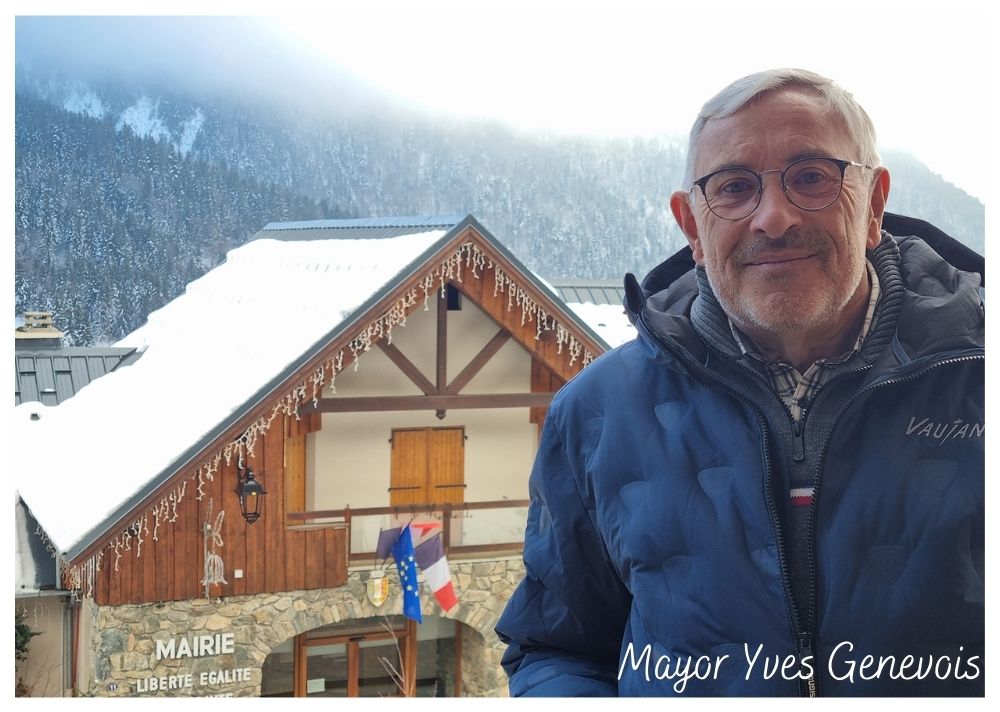
A northern star
Offering great conditions well into April, Sälen in Sweden is perfect for a family ski holiday
by Rebecca Miles
Booking a skiing holiday in the Easter holidays can be a risky business. For families tied to term dates, the Easter break is one of only three options available throughout the winter, and with Christmas conditions becoming less predictable and February half term eye-wateringly expensive, that just leaves Easter. But with often sunny and slushy conditions in the Alps by early April an Easter ski holiday can leave some fans wanting more. The answer? Head north, to Sweden.
Sälen is Sweden’s largest ski resort and is made up of four connected areas – Lindvallen, Högfjället, Tandådalen and Hundfjället. At the latter, you’ll find the SkiStar Lodge Hundfjället, a smart hotel full of self-catering apartments and suites sleeping up to 12 (the Swedes generally like to be autonomous on holiday and shun half-board options) and only a handful of hotel rooms, that opened in December 2021. From the outside, the eight-storey lodge wouldn’t be out of place in a North American ski resort, but inside it has a Scandinavian flair with a hint of Soho House suave that makes it impeccably stylish but also impeccably laid-back and friendly.
Built at the foot of the slopes and with its own ski rental shop and one of the fanciest ski locker rooms I’ve ever known exiting directly on to the snow, it couldn’t be more convenient, which is a huge plus for families.
What’s even more of a plus for families with children of an impressionable age is the Trollskogen (trolls’ wood) ski run. An enchanted forest in the Hundfjället area, it’s home to Sälen’s trolls who play and sing (yes really) throughout the day. My six-year-old daughter was utterly enchanted and would have happily skied this run on repeat for our whole stay. A gentle slope through the trees with narrow snow-covered tracks dipping and diving off to each side, we see the trolls do everything from attempt to ski jump to go to school, get married and even sit on the loo. With the smell of wood smoke coming from the self-service barbecue–ready huts (complete with logs and grills for all to use) and Våffelstugan waffle house it makes a sociable focal point at mid mountain.
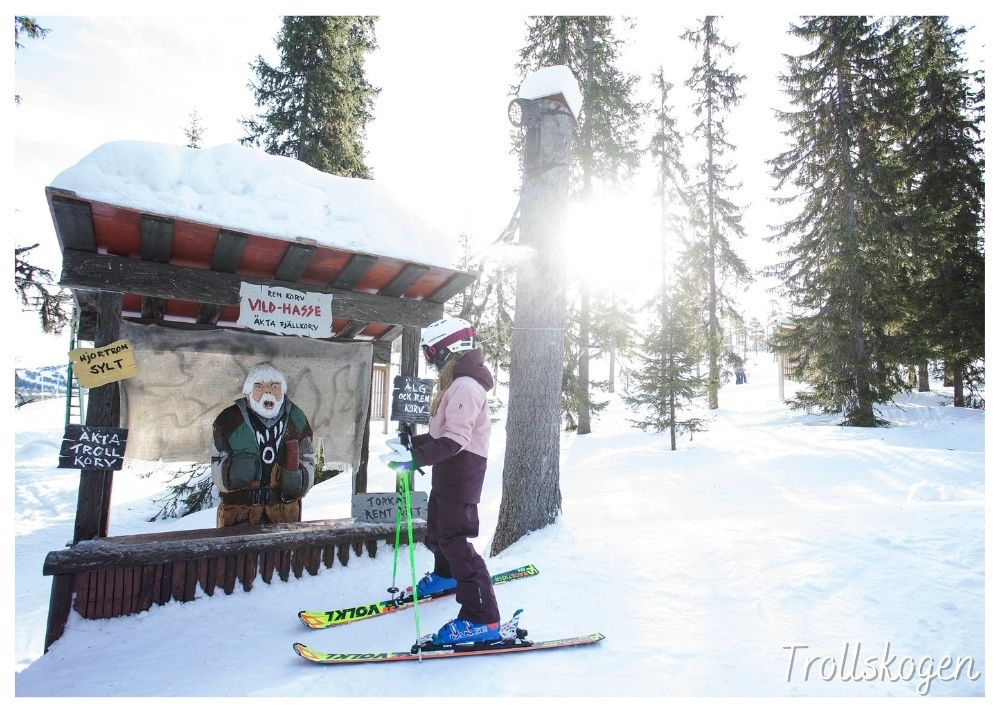

The ski area in Sälen is so large that we – my husband and I, our daughter and my parents – don’t manage to cover it all during our stay, but what I do ski in Tandådalen and Hundfjället is ideally suited to intermediates, and both easy to access by fast chair lifts and T-bars, and easy to navigate. There’s also plenty to do off the slopes, including lots of cross-country ski routes covering the valley floor and winding among the trees. For kids, there are fun activities with Valle the snowman, the resort’s mascot, and in bus-linked Lindvallen, the largest of Sälen’s villages, is Experium, a huge indoor water park with slides, spa and surf simulator, plus bowling alley, arcades and restaurants.
Quickly settling into the swing of a family ski holiday in Sweden, we make sure to swim every day in the Lodge’s pool and relax in the large outdoor hot tub, as well as book time on the Lodge’s shuffleboard table, which quickly gets highly competitive.
Chatting with Ben Nyberg, managing director of Ski Scandinavia, which specialises in the region and is the first UK operator to sell holidays to SkiStar Lodge Hundfjället, he says Hundfjället is tailored towards independent ski families with 24-hour support via his team based over the Norwegian border in Trysil. Married to a Swedish woman and raising his family in the country, his love for the whole of Scandinavia is clearly evident as he enthuses about its history, culture and way of life on the incredibly short 10-minute transfer to the Scandinavian Mountains airport from Hundfjället (another huge plus).
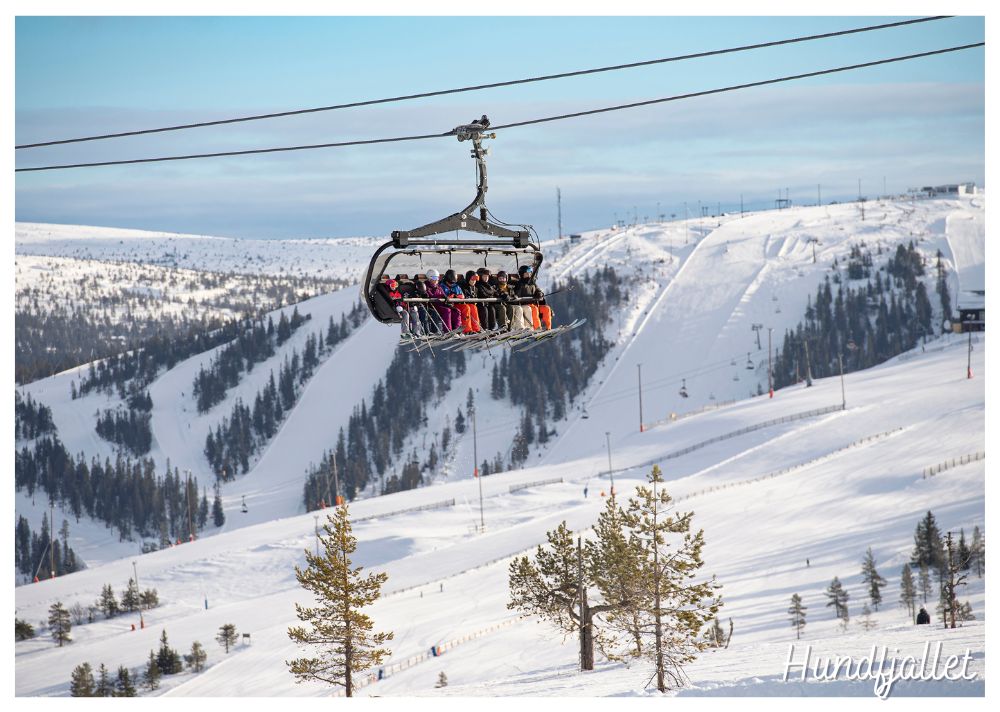

We relish our independence in Hundfjället, particularly when it comes to dinner. While the Lodge’s restaurant Potus! is impressive and inventive without being pretentious, it’s our meal at Joängets Våffelstuga, five minutes walk from the Lodge, that becomes a highlight. With it snowing heavily outside, we’re shown to our table in a little wooden cabin, lit only by the flames from the central fire flickering up the chimney. Around the fire five places are set, and we squeeze in to take our seats on the circular bench draped with blankets and cushions lining the cabin’s walls. Served a set menu of savoury waffles, reindeer steak and cloudberries, it’s the perfect end to our stay.
As the snow continues to fall and the temperature stays low, it’s hard to believe it’s late in the season. But it is, and we might just have found our new family favourite Easter getaway.
Searching for the soul
There’s more to Andermatt in Switzerland than epic off-piste terrain
by Simon Miller
With a reputation as one of the world’s off-piste skiing epicentres, Andermatt is also an outstanding winter destination for winter walkers and alpine aficionados. Lying at the cross roads of medieval Europe, Andermatt, in the Uri canton in Switzerland, has an enormously rich history to discover and, as with finding the best skiing, you simply need a good guide to help.
Meet Bänz. Ask anyone in the village and they’ll direct you to Bänz Simmen – the owner of Kiosk 61, an internet café-cum-crystal shop. He describes himself as a tour guide, crystal digger, snowshoe tester, herbalist and if I had another two hours probably more besides.
Whipping out a 3D map he shows how Andermatt was perfectly placed for the medieval Italian citystates to access Germany for trade and a bit of fisticuffs.
Bänz’s snowshoe hikes around the village and surrounding mountains will leave you swamped with stories. I am a new convert to snowshoeing – I had long been dismissive of strapping ‘tennis racquets’ to my feet, but now love the wonderful stillness of padding through snowy forests.
Winter quiet, with the muffling effect of snow, is like no other. The tranquility heightens your other senses: the smells of the different pines, the subtle sounds of birds and marmots, the majestic views.
A wonderful narration avalanches from Bänz as we walk the Hospental loop, covering subjects from the 50 edible plants in the valley, to the crystals he digs up, as well as the myths and legends that abound.
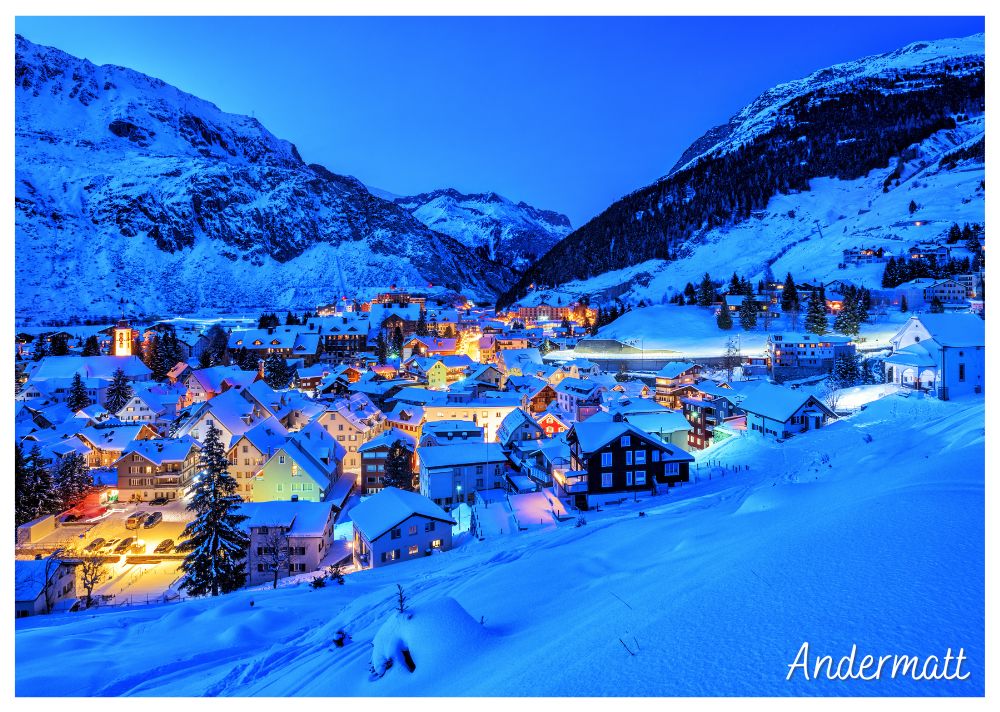

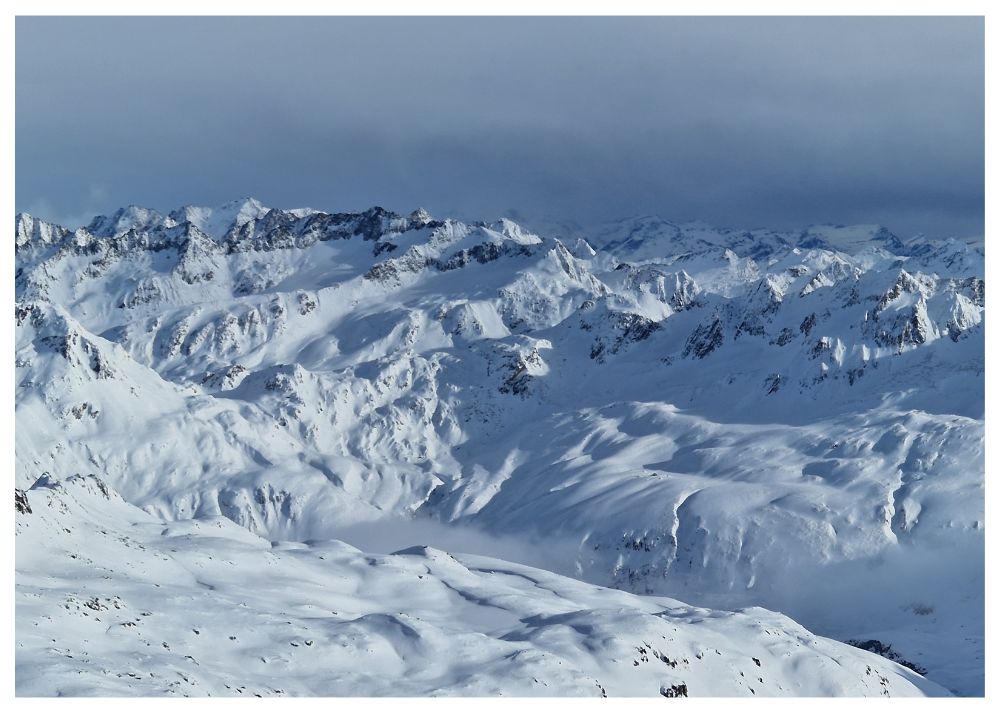
Andermatt itself is a classic alpine village dating back centuries. All this will soon compete with the £1.5bn investment in Andermatt ‘new town’, kicked off by Egyptian billionaire Samih Sawiris. I’ll leave others to review the newly opened Radisson Blu hotel; I thoroughly enjoyed the casual, local charm of the family-run Gasthaus Skiklub. Mascia Meneghel, the granddaughter of the founders, now runs the place and is a delight.
So what of this famed off-piste skiing? Conditions were not in my favour during my visit last winter, but the real highlight were the stories around the village and valleys from Bänz.
How to have a more sustainable winter holiday
If you’re worried about the environmental impact of your winter holiday, here are our suggestions for how to have a less carbon-intensive time in the mountains
Take the train. Flying to your destination eats up a lot of carbon and can be pretty stressful (if you’ve travelled through Geneva airport on a peak holiday weekend, you’ll know the feeling). Instead, the train has many merits – including it’s more relaxing (there’s space to walk around, have a drink in the bar carriage, and no fear of turbulence); there are no extra fees for taking your skis or snowboard; and it provides the opportunity to break up the journey in an interesting city or two en route.
Or take the ferry and drive – as long as you have a full car of passengers (bonus points if you’re in an EV).
Choose your resort wisely. Some are making great strides in using renewable energy (Serre Chevalier in France, Laax in Switzerland) and doing clever things with, for example, how they manage their snow cover. Look for the Flocon Vert (Green Snowflake) label in France, the EcoLabel and KLAR in Austria, and the Swisstainable mark in Switzerland.
Consider alternative winter sports away from the downhill pistes, such as snowshoeing, cross country and ski touring, where your impact on the mountains will only be snow deep.
Rent your gear, or if you must buy, buy to last. EcoSki is the go-to here, whether you choose to borrow some of its great quality kit, or be guided by its guide to the brands that are taking their sustainability responsibilities seriously.
Into the wild
Tempted by winter in Scotland? Ski instructor and ski touring guide Amy Marwick shares what makes the country so special
Breath-clouding temperatures, moon-like landscapes, and the rush of a wintery breeze… Some might say sliding the Scottish mountains in winter is the best way to explore this country. Whether that’s strapped to a snowboard or clicked-in to touring skis, Scotland’s mountains offer world-class snowsport slopes and backcountry terrain – if you’re willing to take the rough with the smooth.
Scotland is home to six lift-served snowsport areas: Glencoe; Glenshee; Cairngorm Mountain; Nevis Range; the Lecht; and the Lowther Hills. The resorts often enjoy enough snow to remain open (in fits and starts) from December all the way through to May. The snow may be of varying quality, but the fabled line, “If you can ski in Scotland, you can ski anywhere,” has its basis in truth. And for those with backcountry aspirations, there are miles of wilderness to explore across the Highlands and into the north-west of the country. Snow often remains in the north-facing gullies throughout the winter and sometimes into June – just don’t forget your hiking boots, as there might be some gaps in the snow cover!
Of course, skiing in Scotland is not to be compared to cruising Alpine groomers or North America’s motorway pistes. It’s a more rugged and challenging affair in every sense. Fast changing weather can work for you or against you, but if you’re looking for adventure, a Scottish winter offers it in spades.
The experience is much more akin to exploring Norway or the club fields in New Zealand, where a hardcore of locals could tell you the exact number of days they have skied this season (and the last 20). It is this commitment, hardiness, and community spirit that keeps the resorts ticking over – welcoming and enthusiastic, whatever the weather. You’d find it difficult not to be inspired to get out and have a go.

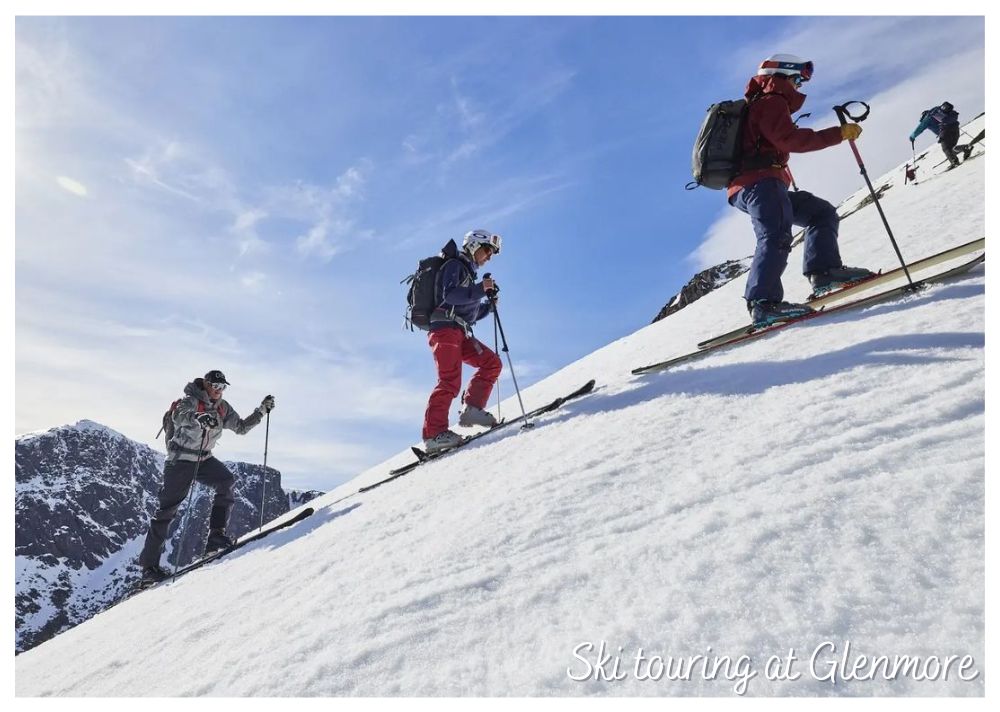
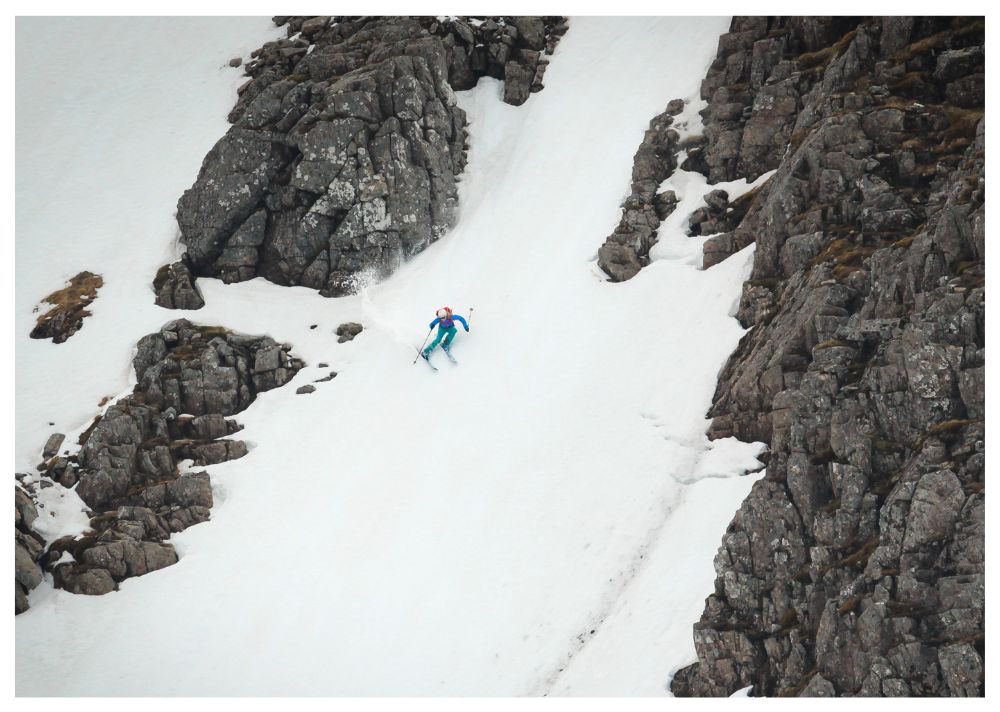
If you’re thinking of taking your first slide this winter, all of the resorts offer lessons and kit hire from their mountain base stations (with the exception of the Lowther Hills, which is a volunteer-run club). If you’d like to flex your snow skills on some more remote terrain, why not check out the courses run by Glenmore Lodge, Wandering Workshops or British Backcountry? In recent years, ski touring and split boarding have experienced a boom across the globe thanks to lighter weight kit becoming more accessible, and a trend towards human-powered escapades – which the wild and wondrous Scottish mountains cater to perfectly.
Our top Scottish snowsport experiences to try this winter
The wild weekend at Glenmore Lodge (16-17 March, 2024) offers novice and experienced ski tourers the opportunity to dedicate a full weekend to exploring the Cairngorm mountains (complete with Saturday night apres-ski party).
Wandering Workshops offer immersive ski touring and split boarding adventures with a focus on mindfulness and wellbeing, as well as off-piste skill sessions and bespoke courses.
British Backcountry are the go-to-guys for bike and ski missions, gullyhunting tours, and navigation or snow safety clinics, with courses running at weekends wherever (and whenever) there’s snow.
Get in touch with our expert travel agents today to plan your perfect winter holiday, and donate 5% of the price to the charity of your choice for FREE!
This is a feature from Issue 18 of Charitable Traveller.

















 by net effect
by net effect